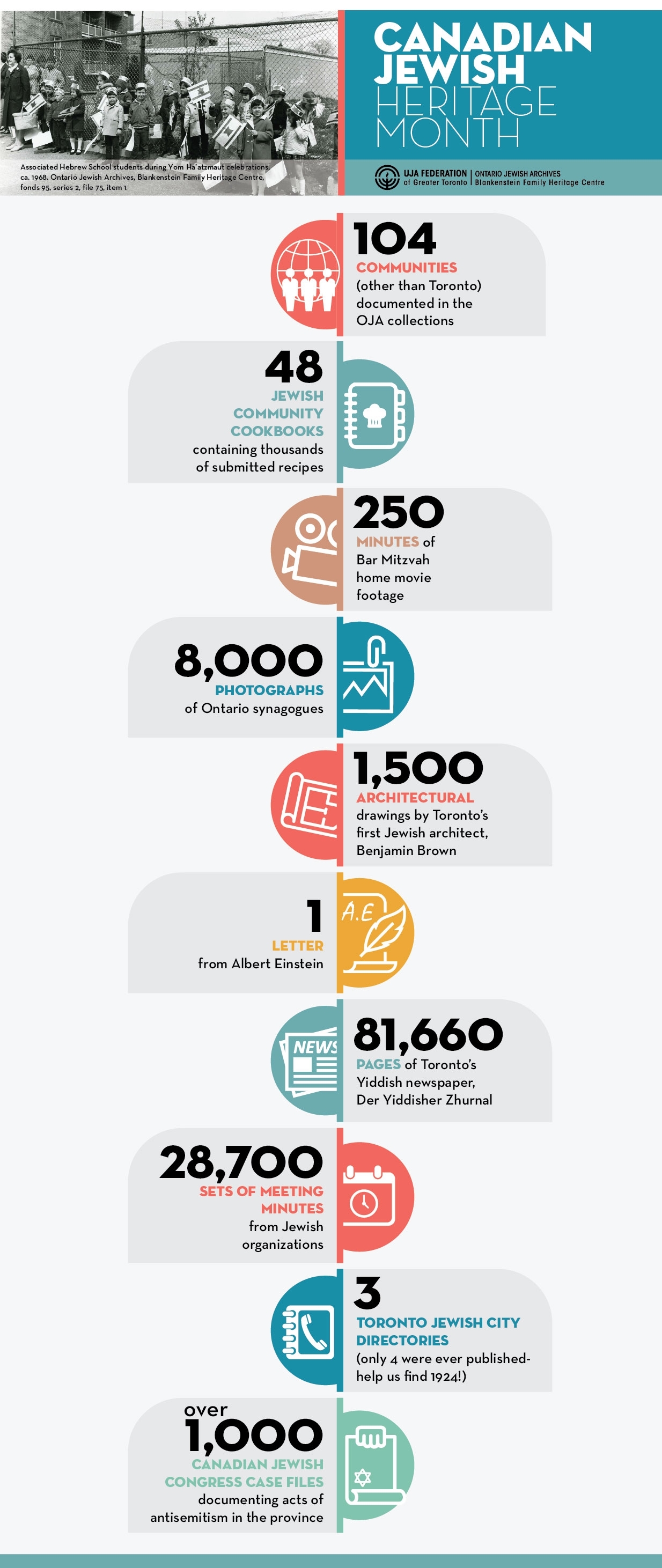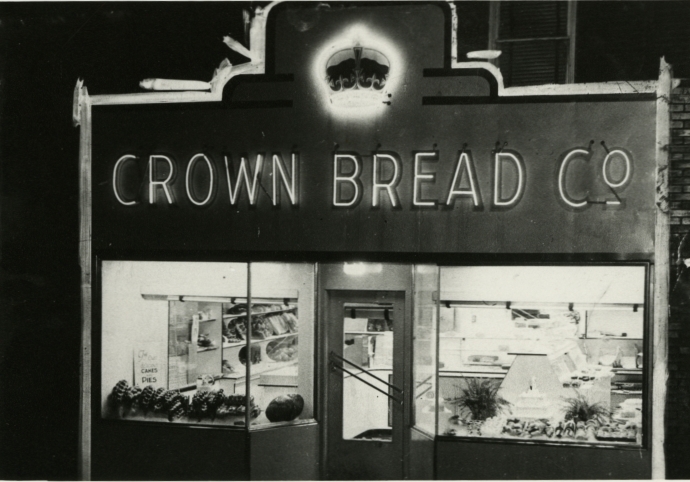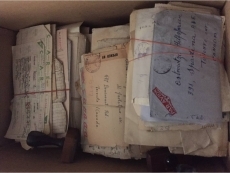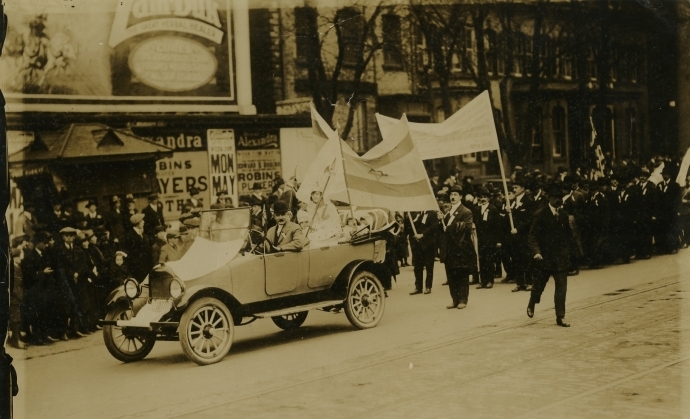Researching the Standard Theatre at the Ontario Jewish Archives
By Tyler Wentzell
In the heart of Chinatown, on the northeast corner of Dundas and Spadina, there is a brown brick building with a Rexall on the ground floor. It does not look like much, but it is actually of considerable historical significance. It is the site of the first purpose-built Yiddish theatre in Canada and some very dramatic events during the Great Depression. The Standard Theatre, as it was originally called, became the subject of my recent research at the Ontario Jewish Archives, Blankenstein Family Heritage Centre.
I should tell you a little bit about why I came to research the Standard Theatre. My background is as a military historian. I have mostly written about soldiers and battles. I have never written anything about theatres or cultural history. I stumbled upon the subject of the Standard Theatre while researching Canadians in the Spanish Civil War (1936-1939), specifically looking at one volunteer: Edward Cecil-Smith, the commander of the Mackenzie-Papineau Battalion.
I had expected to write about Cecil-Smith’s command of his battalion in some of the key battles during the Spanish Civil War. But in researching Cecil-Smith, I became equally fascinated by his career in radical politics in Toronto during the 1930s. He was a journalist and newspaper editor, and very involved in the Workers’ Theatre. He even wrote a play -- Eight Men Speak – in protest against the incarceration of the leadership of the Communist Party of Canada (CPC). The play was performed only once – it was banned by all three levels of government after they tried to perform it again – and it was performed in the Standard Theatre.
I was amazed to learn that Canada – the country I love so much, with its deep respect for civil liberties – had banned a political party and then banned a play about the ban! Canada was the only English-speaking country to formally ban a communist party in peacetime. The trial of the CPC’s leadership is fascinating; they were actually put on trial for what they believed, not for what they had done (read Dennis Molinaro’s, An Exceptional Law to learn more about the law and the trial).
The play, Eight Men Speak, from what I could tell, was not seditious, hateful, violent, nor lewd. It was just offensive to government authorities. I needed to know a little bit about the Standard Theatre and the neighborhood as it existed in the 1930s in order to provide some context.
I am not from Toronto, so I was very surprised to learn how very different this neighborhood was in the 1930s. Chinatown, at the time, was where Nathan Phillips Square sits today. The area around Dundas and Spadina was the home of Toronto’s Jewish community, and the Standard Theatre was one of its key cultural hubs. Theatres are always important, but they were particularly important in the days when televisions did not exist and household radios were too expensive to be common.
The Standard Theatre was the site of a number of dramatic events as Toronto struggled with how it was going to deal with different kinds of people and different kinds of ideas. For example, in 1929 the Toronto Police used tear gas in the theatre when Yiddish was spoken in violation of a police order. Here, the fear of communism overlapped with anti-Semitic attitudes and it made for a very ugly picture.
I went to the Ontario Jewish Archives to learn more about the history of the theatre. I had a great experience with the archives. I found their online search tool to be very user friendly and thorough, and when it was time to make a visit I easily got a hold of a real person. Donna was a big help. She suggested interesting and useful resources, like an oral history interview with a gentleman who had worked at the Standard as a young man, and the original architectural drawings in the collection of Jewish architect, Benjamin Brown. I was really impressed by the collection and the helpfulness of all the staff. I would encourage anyone with a research question to check out their website and to book a visit.
The result of my research on the Standard Theatre is an article out in the May edition of Spacing magazine. I was quite happy that by simple coincidence, the magazine was on shelves in time for the inaugural Canadian Jewish Heritage month.
Please check out and enjoy the article in Spacing magazine (you can find where to get a copy at http://spacing.ca/magazine ), and stay tuned for more on the Standard Theatre in my biography of Edward Cecil-Smith, coming out this November.
Postscript: I would add that the Standard Theatre continued to be an interesting place. After the Second World War, the building became the Victory Burlesque, and when the neighborhood transitioned to Chinatown, it became the Golden Harvest Theatre. My parents-in-law, from Hong Kong, told me that that was where they spent their Friday nights in their youth—it was the only theatre with its own restaurant and they had great prices on Cantonese double features. The building has seen a lot and it really is a slice of Toronto. It is important to the cultural history of Jewish and Chinese Canadians and the site of key events in Canada’s history of civil liberties. Yet the building has no historical marker, and the theatre sits empty. The second floor (once the theatre’s balcony) is presently unoccupied. Perhaps this building deserves something more.
 Tyler Wentzell is a historian in Toronto. He writes on military history and left-wing revolutionary groups, with a focus on the Great Depression and the Second World War. He is currently working on a book about William Krehm, the leader of the Toronto-based League for a Revolutionary Workers’ Party and a witness to the dramatic events in Barcelona in 1936-1937. Follow him @tylerwentzell
Tyler Wentzell is a historian in Toronto. He writes on military history and left-wing revolutionary groups, with a focus on the Great Depression and the Second World War. He is currently working on a book about William Krehm, the leader of the Toronto-based League for a Revolutionary Workers’ Party and a witness to the dramatic events in Barcelona in 1936-1937. Follow him @tylerwentzell
![Standard Theatre movie poster collection, [between 1925 and 1935]. Ontario Jewish Archives, Blankenstein Family Heritage Centre, accession 2012-10-4.](https://ontariojewisharchives.org/cms_uploads/images/quotes/2012-10-4.jpg)
![Abe Goldberg collection, 1928-[ca. 1944]. Ontario Jewish Archives, Blankenstein Family Heritage Centre, accession 1982-7-6.](https://ontariojewisharchives.org/cms_uploads/images/quotes/1982-7-6_01.jpg)
![Standard Theatre movie poster collection, [between 1925 and 1935]. Ontario Jewish Archives, Blankenstein Family Heritage Centre, accession 2012-10-4.](https://ontariojewisharchives.org/cms_uploads/images/quotes/4274-copy1.jpg)

![Major Ben Dunkelman with unknown soldier, [ca. 1944]. Ontario Jewish Archives, Blankenstein Family Heritage Centre, fonds 2, series 6, file 100, item 1.](https://ontariojewisharchives.org/cms_uploads/images/F2_s6_f100_i1-copy1.jpg)


